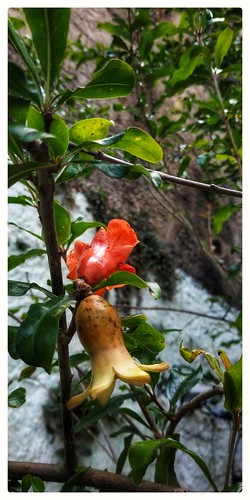Ter name code, with females above the black line and males
Ter name code, with females above the black line and males below. Bootstrap self-confidence intervals (95 ) shown in each figures were derived from 000 replications from the original information (D.three: dry 203, W.3: wet 203, D.four: dry 204 W.four: wet 204). doi:0.37journal.pone.057228.gassociation values than FM in both seasons of 204 indicates that females have been sharing areas of use amongst themselves greater than with males, irrespectively in the season (S7 Fig). The random association index showed a significant increase in the wet vs. dry season of 203 (W 430, n 55, P0.0), but no modify in between seasons in 204 (W 62, n 55, P 0.two), indicating that individuals have been drastically additional prone to seek out another by opportunity in wet vs. dry 203, when in 204 there have been no seasonal variations in this respect. Meanwhile, dyadic associations within the core places didn’t show seasonal modifications (203: W 559, n 55, P 0.08; 204: W 552, n 55, P 0.07; S8 Fig). For that reason, this result didn’t reflect the seasonal enhance in the probability of random encounter in 203 as could be expected if cooccurrence was mainly prompted by this method in a passive association scenario. Similarly, the lack of seasonal alter inside the random association index in 204 makes it unlikely that the seasonal increase in dyadic associations was associated to this spatial effect. Permutation tests highlighted associations that occurred each a lot more (eye-catching) and less (repulsive) than the random expectation inside the 4 seasons analyzed, detecting a maximum of within the wet season of 203 as well as a minimum of four in the dry season in the very same year, for any total of 32 (S7 Table). All the seasonal final results were above the expected quantity of nonrandom associations by possibility (two.75). Of all of the significant associations expected, only one dyad was present in all four periods with an attractivetype of association. That is the only dyad conformed by a female and her adult daughter (CH and LO). Because dyadic association values for this dyad had been often the highest in each and every season, and motherdaughter pairs are uncommon in spider monkey groups provided that subadult females usually migrate, we ran a second permutation test removing LO (the adult daughter of CH) in the analysis. This permitted us to detect added nonrandom associations, previously undistinguished due to the outlying values in the dyadicPLOS A single DOI:0.37journal.pone.057228 June 9,4 Seasonal Alterations in SocioSpatial Structure within a Group of Wild Spider Monkeys (Ateles geoffroyi)Fig 4. Average seasonal values for (a) the dyadic association index and (b) the spatial dyadic association index, through the dry (light gray) and wet (dark gray) seasons of 203 (circles) and 204 (triangles), grouped by the sexual composition of dyads: femalefemale (FF), malefemale (MF), malemale (MM), and all collectively (Total). 95 bootstrap self-confidence intervals have been derived from 000 replications. doi:0.37journal.pone.057228.gassociation index between CH and LO, particularly during 203 (S7 Table). Most associations identified within the 1st test also resulted nonrandom inside the second run,  together with the exception of one PI3Kα inhibitor 1 particular repulsive in the wet season of 203 (JAMS) and three desirable associations in PubMed ID:https://www.ncbi.nlm.nih.gov/pubmed/24133297 wet 203 (EGTL), dry 204 (MSTL) and wet 204 (FLJA), respectively. Combining both tests (with and without having LO), we detected a maximum of 3 of those associations inside the wet season of 203, in addition to a minimum of 7 inside the dry season of 203 (S7 Table; S9 Fig) for a total of 38 general. Outcomes include dyads with assoc.
together with the exception of one PI3Kα inhibitor 1 particular repulsive in the wet season of 203 (JAMS) and three desirable associations in PubMed ID:https://www.ncbi.nlm.nih.gov/pubmed/24133297 wet 203 (EGTL), dry 204 (MSTL) and wet 204 (FLJA), respectively. Combining both tests (with and without having LO), we detected a maximum of 3 of those associations inside the wet season of 203, in addition to a minimum of 7 inside the dry season of 203 (S7 Table; S9 Fig) for a total of 38 general. Outcomes include dyads with assoc.
